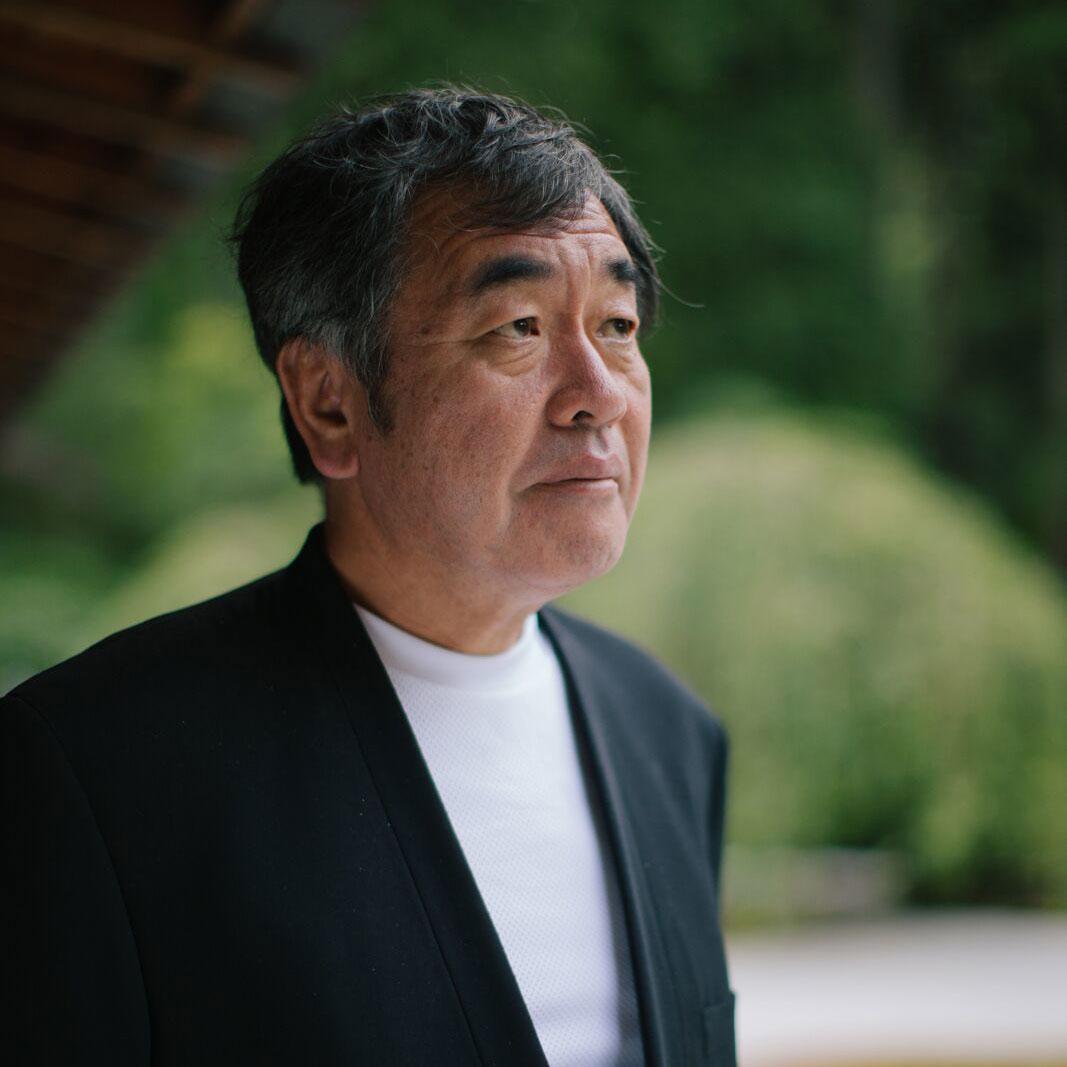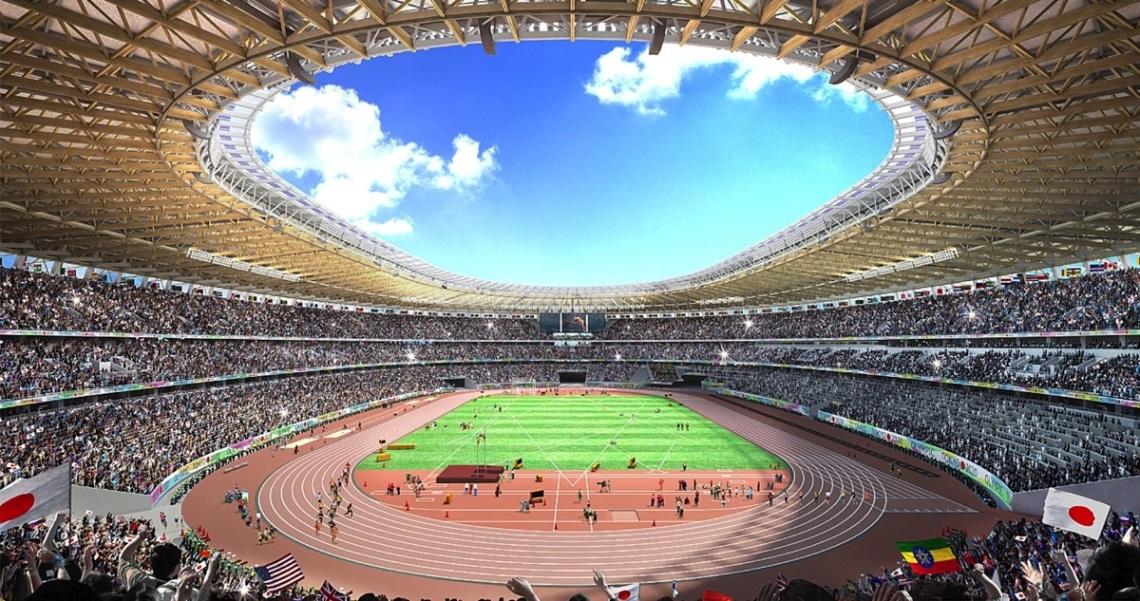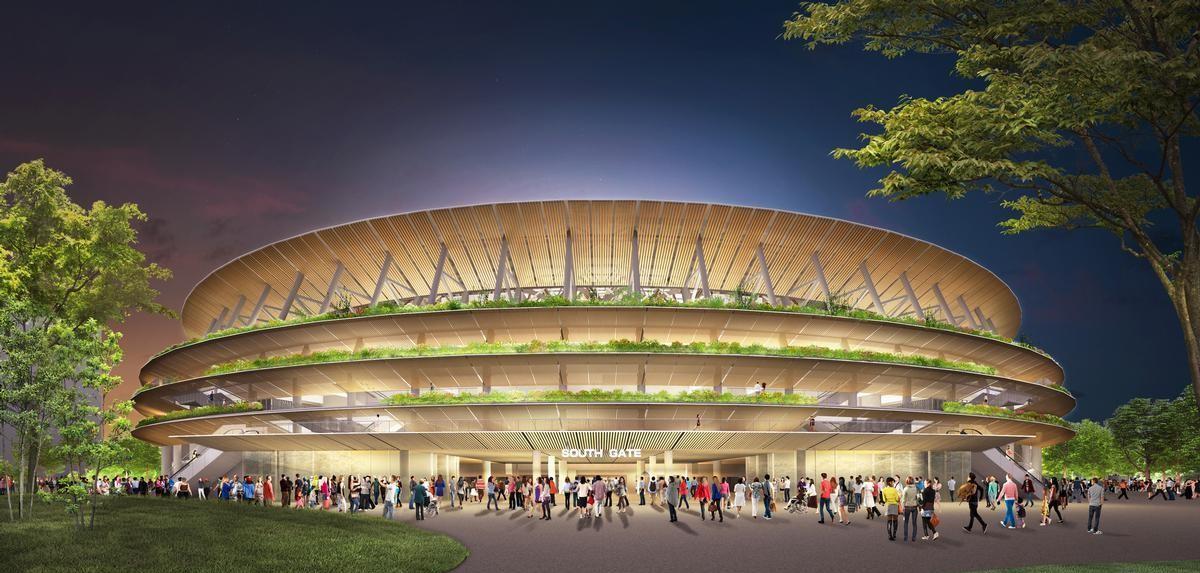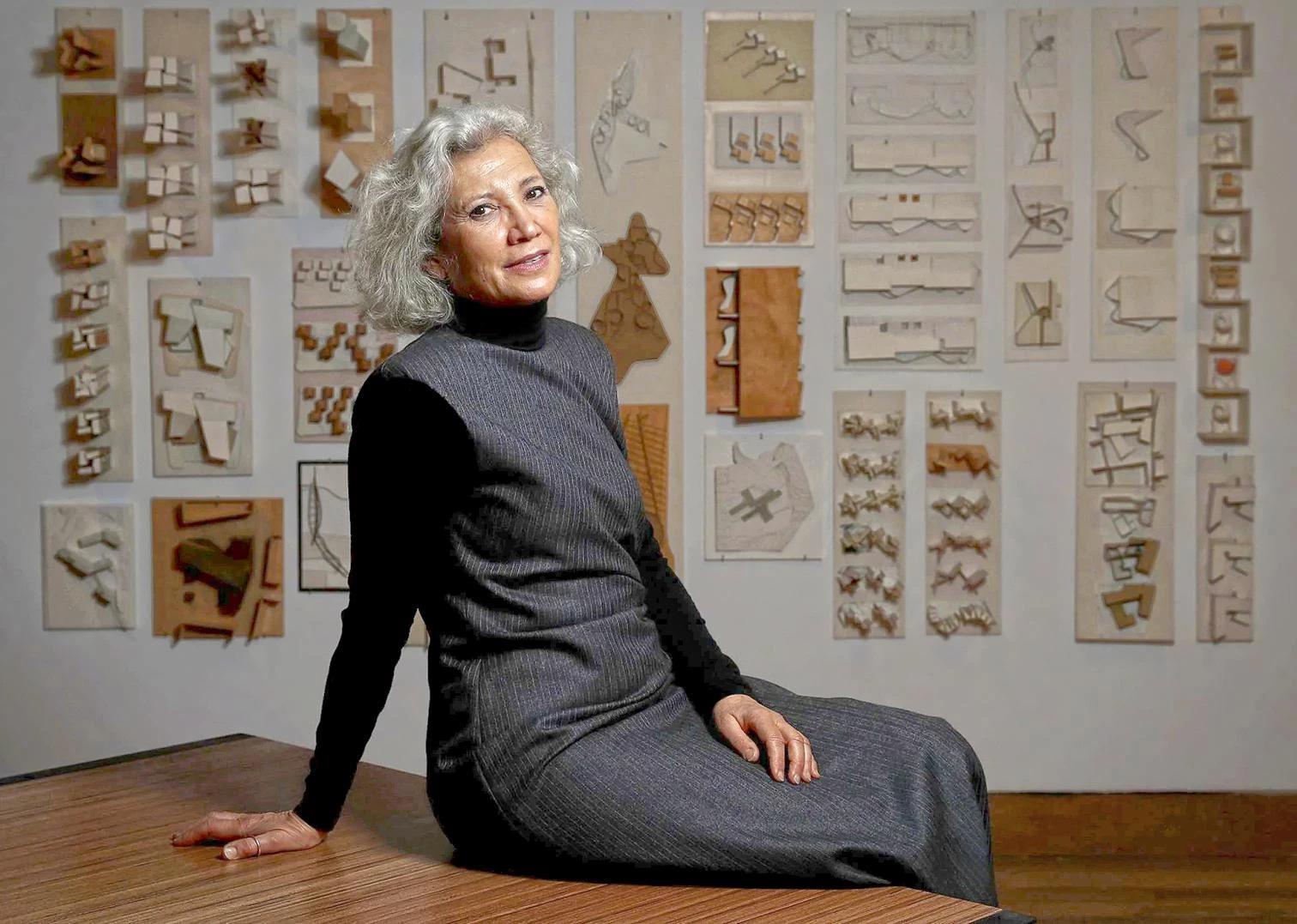Sustainable Masterpiece: Tokyo 2020 Olympic Stadium By Kengo Kuma
- 1 Dec 2023
- By Deshal Shah

Architect Kengo Kuma is a renowned Japanese architect celebrated for his innovative and nature-inspired designs. Born in 1956, Kuma has made a significant impact on the world of architecture with his commitment to sustainable materials and blending traditional Japanese aesthetics with contemporary sensibilities. His work, which includes the iconic Tokyo 2020 Olympic Stadium and the Asakusa Culture and Tourist Information Centre, reflects a deep appreciation for the natural environment and a unique approach to spatial design.
Here are three of Kengo Kuma's notable architectural works:
1. Tokyo 2020 Olympic Stadium (National Stadium)
Designed for the 2020 Summer Olympics in Tokyo, this iconic stadium is a prime example of Kuma's ability to blend modernity with nature. Its wooden lattice structure and greenery-integrated design exemplify his commitment to sustainability and harmony with the environment.
2. Asakusa Culture and Tourist Information Centre
Located in Tokyo, this cultural hub combines modern materials with traditional Japanese architecture. The building's stacked timber boxes and the expansive viewing deck provide visitors with breathtaking views of the historic Asakusa district.
3. Suntory Museum of Art (Nihonbashi)
Situated in Tokyo, this museum is a stunning showcase of Kuma's skill in using light and space. The interior, characterized by diffused natural light, creates an ambiance that complements the art within. The use of delicate, organic materials adds to its allure as a work of art in itself.
.1.jpg)
The Tokyo 2020 Olympic Stadium, also known as the National Stadium, stands as a remarkable architectural and design achievement. Hosting the 2020 Summer Olympics in Tokyo, it encapsulates the innovative vision of acclaimed Japanese architect Kengo Kuma. This iconic stadium is an epitome of modernity seamlessly intertwined with nature, making it an architectural marvel that embodies the principles of sustainability, harmony with the environment, and Kengo Kuma's distinct design ethos.
Architecture and Design:
The National Stadium's architecture is a testament to the marriage of contemporary design with traditional Japanese elements. Kuma's design philosophy for this iconic structure was to create a harmonious blend of modernity and nature. The stadium's aesthetic draws inspiration from Japan's rich architectural heritage and its deep reverence for the environment. It is an exemplar of his commitment to incorporating organic forms and sustainable materials into his creations.
One of the most striking features of the stadium is its unique wooden lattice structure. This lattice, constructed from sustainably sourced cedar wood, not only contributes to the stadium's aesthetic appeal but also represents a profound commitment to environmental responsibility. The lattice work evokes the image of a classic Japanese wooden temple, inviting a sense of reverence and tranquillity, even in the midst of a grand sporting event. This design element is not only visually captivating but also serves a practical purpose by providing ample shade to spectators while allowing natural ventilation, enhancing the overall comfort of the stadium.
Incorporating greenery into the stadium's design was a paramount consideration for Kuma. The lush vegetation that surrounds and adorns the stadium, including terraces covered with plants, serves to create an organic connection between the built environment and the natural world. It transforms the stadium into a living, breathing structure that becomes part of its ecological context, thereby promoting the idea of a sustainable, green architectural future.

Sustainability and Harmony with the Environment:
Sustainability was a central theme in the design and construction of the National Stadium. Kuma's meticulous choice of materials and design elements reflects his dedication to minimizing the environmental impact. The extensive use of wood, a renewable resource, exemplifies this commitment. The stadium's cedar wood lattice and other wooden components not only reduce the stadium's carbon footprint but also provide a warm and welcoming ambiance that complements the surrounding greenery.
Moreover, the stadium's emphasis on natural ventilation, enabled by its lattice structure, contributes to energy efficiency. It reduces the need for artificial climate control, minimizing energy consumption and further aligning the stadium with eco-friendly principles.
The relationship between the stadium and its natural surroundings extends beyond its architecture. The incorporation of greenery, such as trees, plants, and terraces, serves a dual purpose. Not only does it enhance the visual appeal of the stadium, but it also contributes to the local ecosystem by creating a habitat for various forms of flora and fauna. This design approach underscores Kuma's commitment to establishing a balance between the built environment and the natural world, a philosophy that resonates strongly with the principles of sustainable architecture.
Kuma's design for the National Stadium ensures that it remains an environmentally conscious and sustainable landmark long after the 2020 Summer Olympics. The combination of architecture, design, and environmental responsibility culminate in a structure that embodies the idea of sustainable modernity.

Kengo Kuma's Vision:
Kengo Kuma, the visionary architect behind the National Stadium, is celebrated for his unique design approach that prioritizes a harmonious coexistence between architectural innovation and the natural world. His design philosophy embodies the ideals of sustainability and environmental consciousness, reflecting a commitment to preserving and nurturing the planet's resources. The National Stadium serves as a vivid testament to Kuma's vision, showcasing the potential of contemporary architecture to embrace nature and elevate human experiences.
In Kuma's body of work, there is a recurrent theme of blending traditional Japanese aesthetics with a modern sensibility. The National Stadium is a shining example of this approach, where the classic Japanese wooden lattice structure, seen in ancient temples and shrines, is reimagined in a contemporary context. This fusion of tradition and innovation is a hallmark of Kuma's designs and establishes a bridge between Japan's architectural heritage and its future.
Kuma's reputation as a visionary architect extends beyond this iconic stadium. His portfolio features a diverse range of projects, each reflecting his dedication to sustainable materials, innovative design, and a profound connection with the environment. His commitment to creating spaces that inspire a sense of awe and reverence is a thread that runs through all his works.
The Tokyo 2020 Olympic Stadium, known as the National Stadium, is a testament to the architectural brilliance of Kengo Kuma. It symbolizes the perfect harmony between modern design and nature, providing a blueprint for sustainable architecture. With its wooden lattice structure, greenery-integrated design, and deep commitment to sustainability and environmental consciousness, the National Stadium stands as an iconic landmark in Tokyo, representing the epitome of Kuma's design ethos. Kengo Kuma's vision and dedication to a sustainable future are brought to life in this remarkable structure, making it not only a sports venue but a living testament to the possibilities of an eco-friendlier and more harmonious architectural world.
Recently Published
loves or pursues or

.jpg)







.jpg)